Abstract
Three pigeons, previously trained to discriminate different numbers of responses (fixed ratios), were tested under different reinforcement contingencies (payoff matrices) at two levels of sensitivity. For one subject, relative reinforcement magnitude was varied—at first, across sessions and then, at midsession by reversing values—without exteroceptive cues. For another, relative reinforcement magnitude and/or probability was varied every 50 trials with cues by correlating different payoff matrices with different key colors. For the third subject, relative reinforcement probability was varied more frequently with cues—in the limit, at random—to demonstrate stimulus control of response bias on a trial-by-trial basis. A signal-detection analysis showed that bias changed with payoffs, for as many as seven different matrices, while sensitivity remained unchanged. The obtained functions (receiver operating characteristics) were similar under different payoff conditions, which suggests that a single mechanism controls bias. However, they differed enough in slope to require a relatively complex account (e.g., the general Gaussian model of detection theory).
Keywords: psychophysics, fixed-ratio schedules of reinforcement, reinforcement access, signal-detection theory, key peck, pigeon
Full text
PDF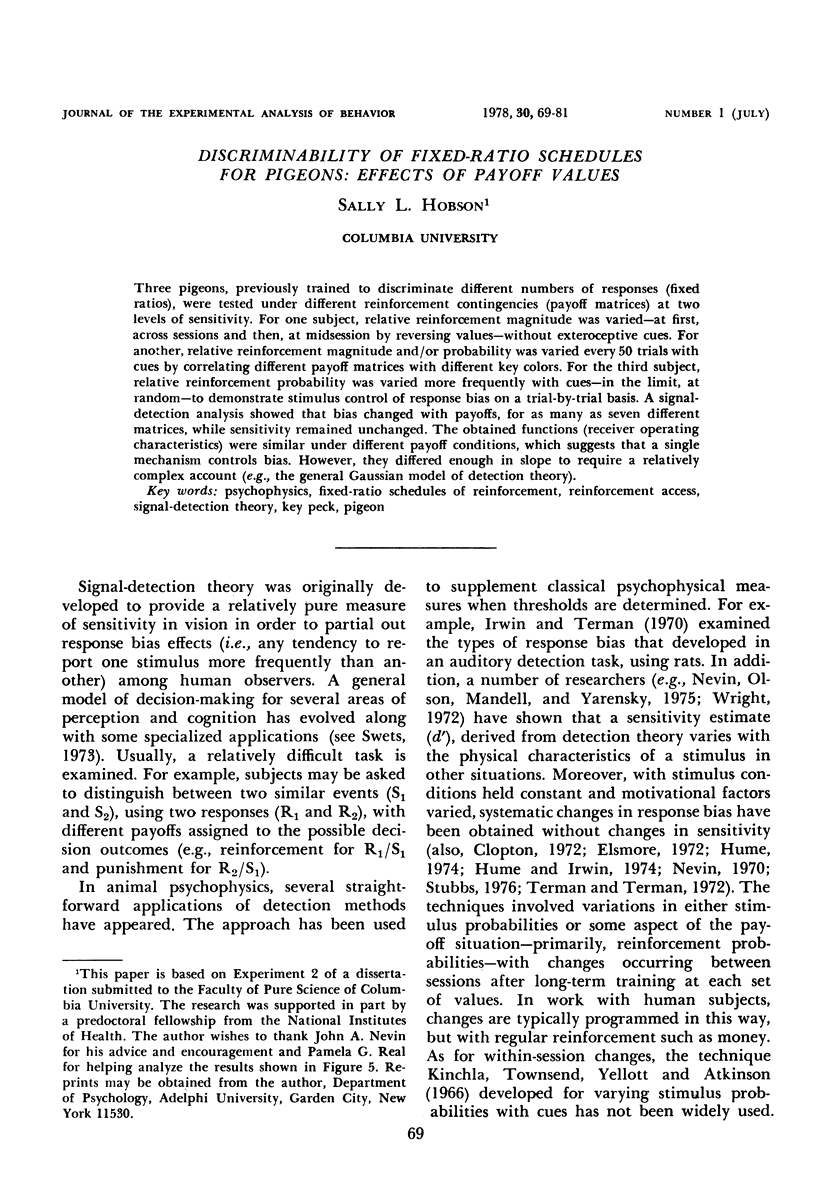
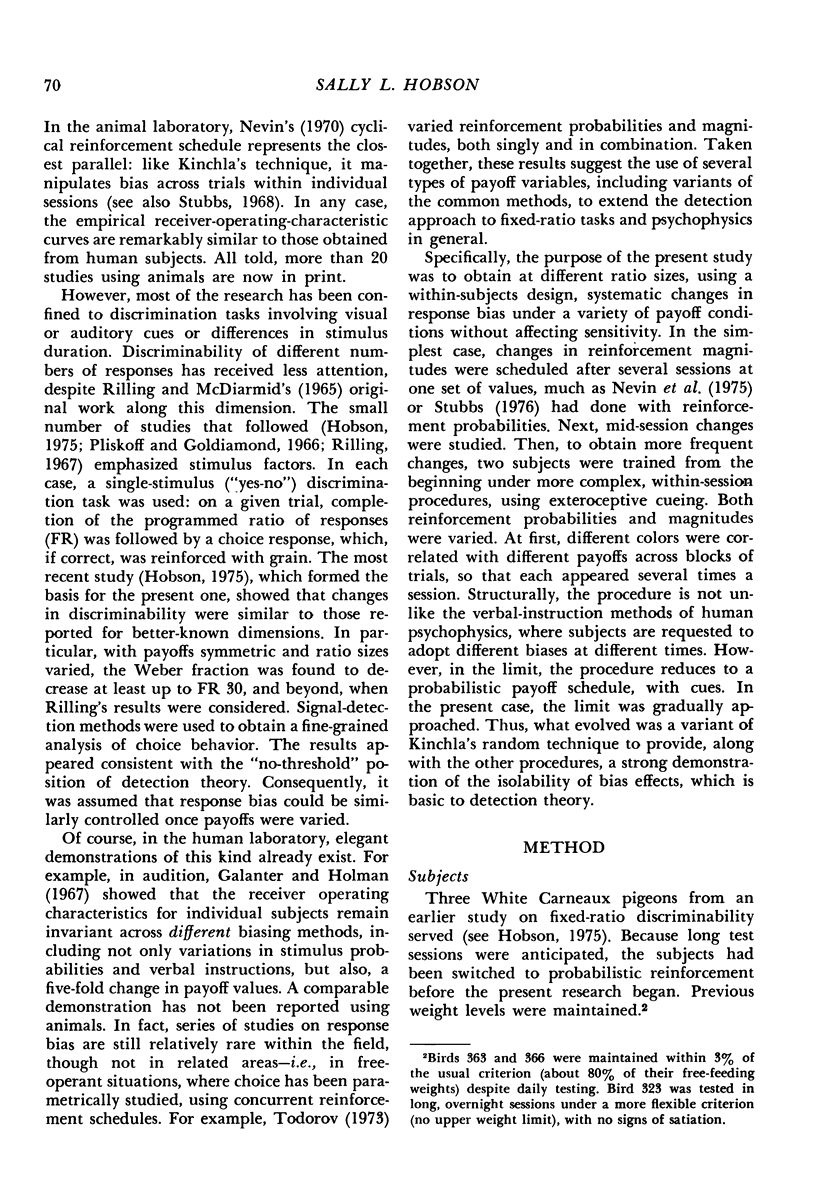
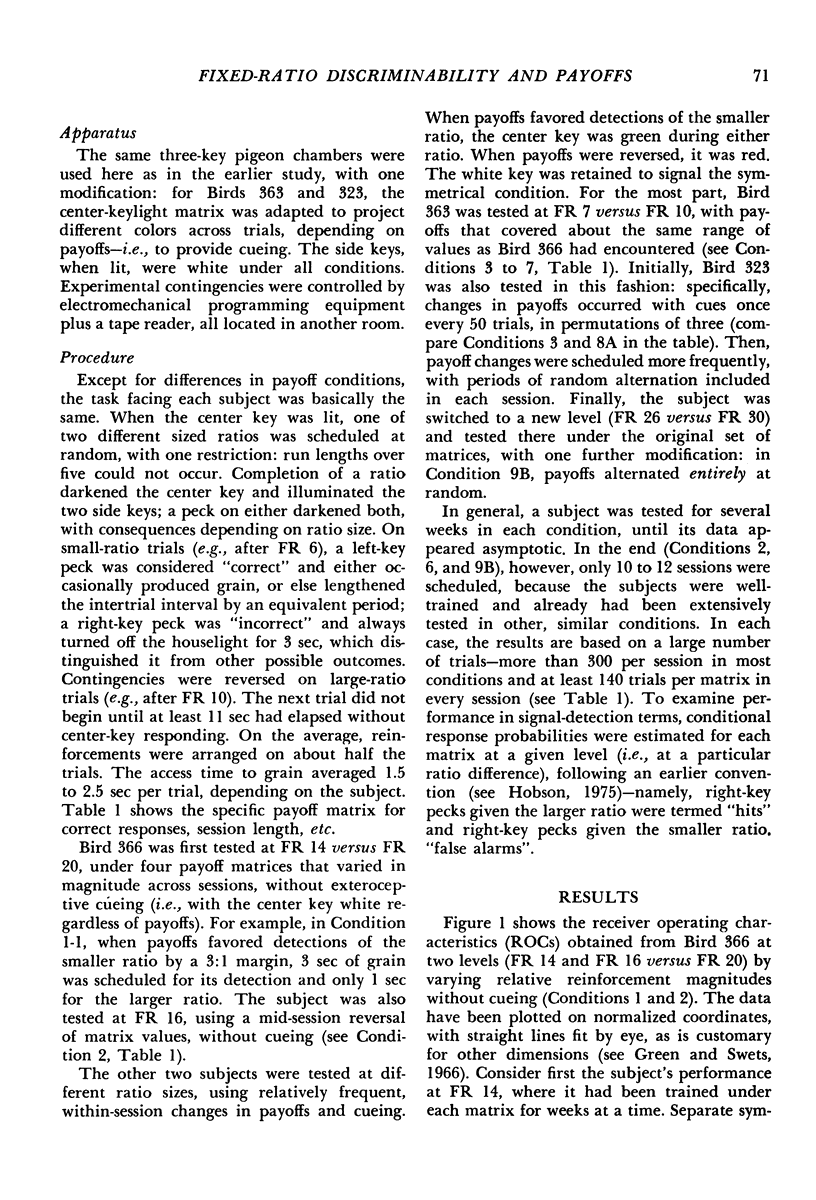
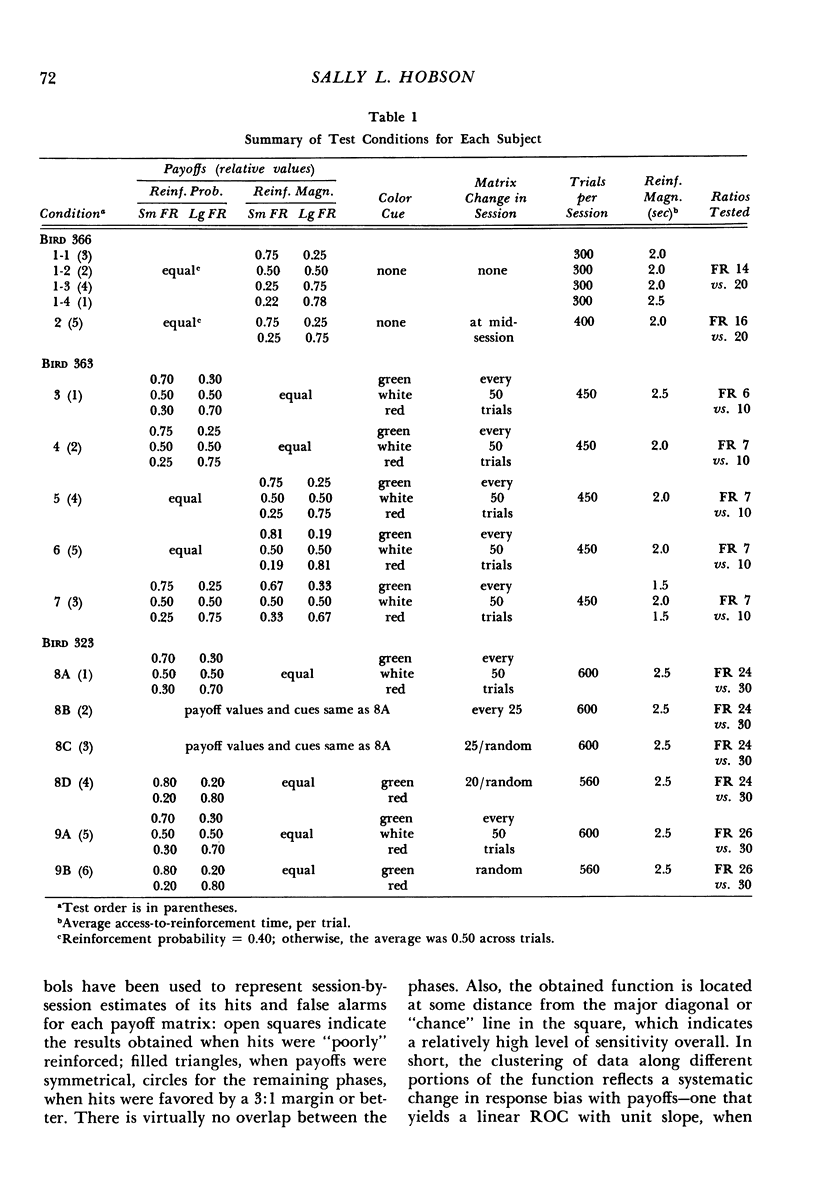
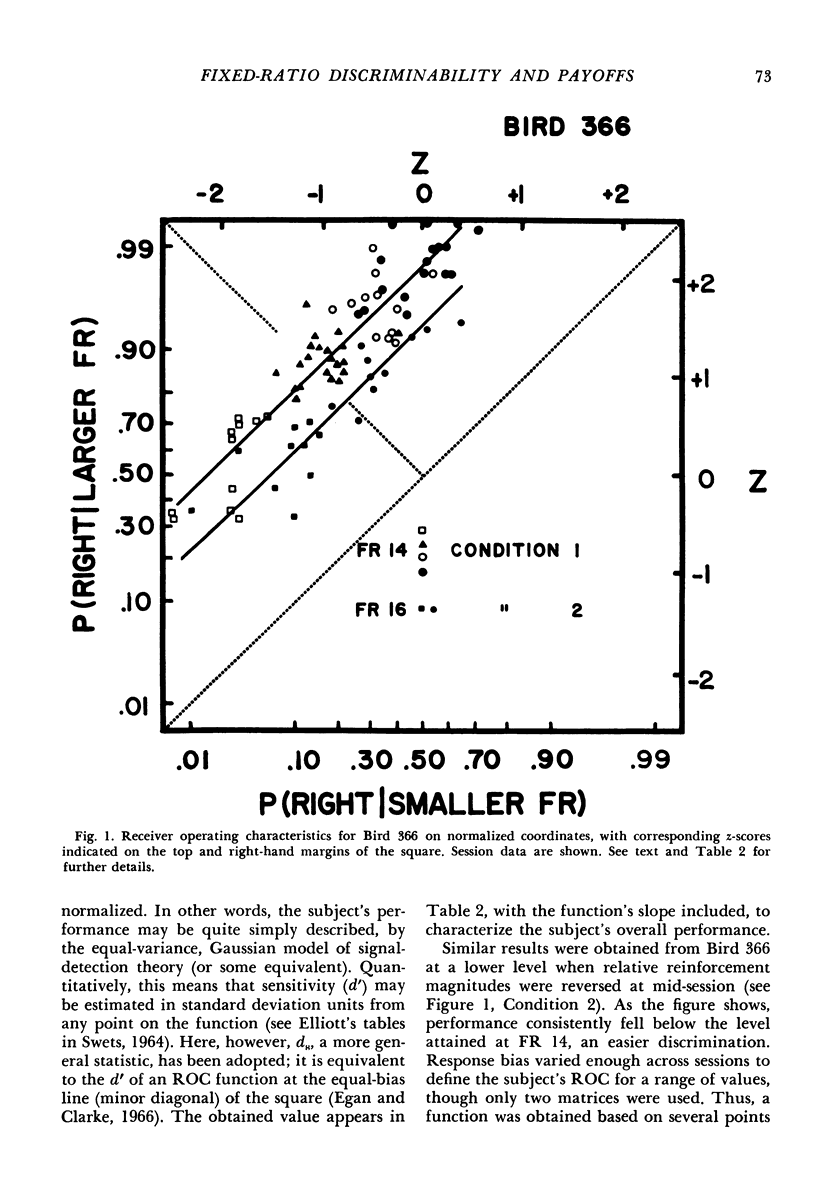
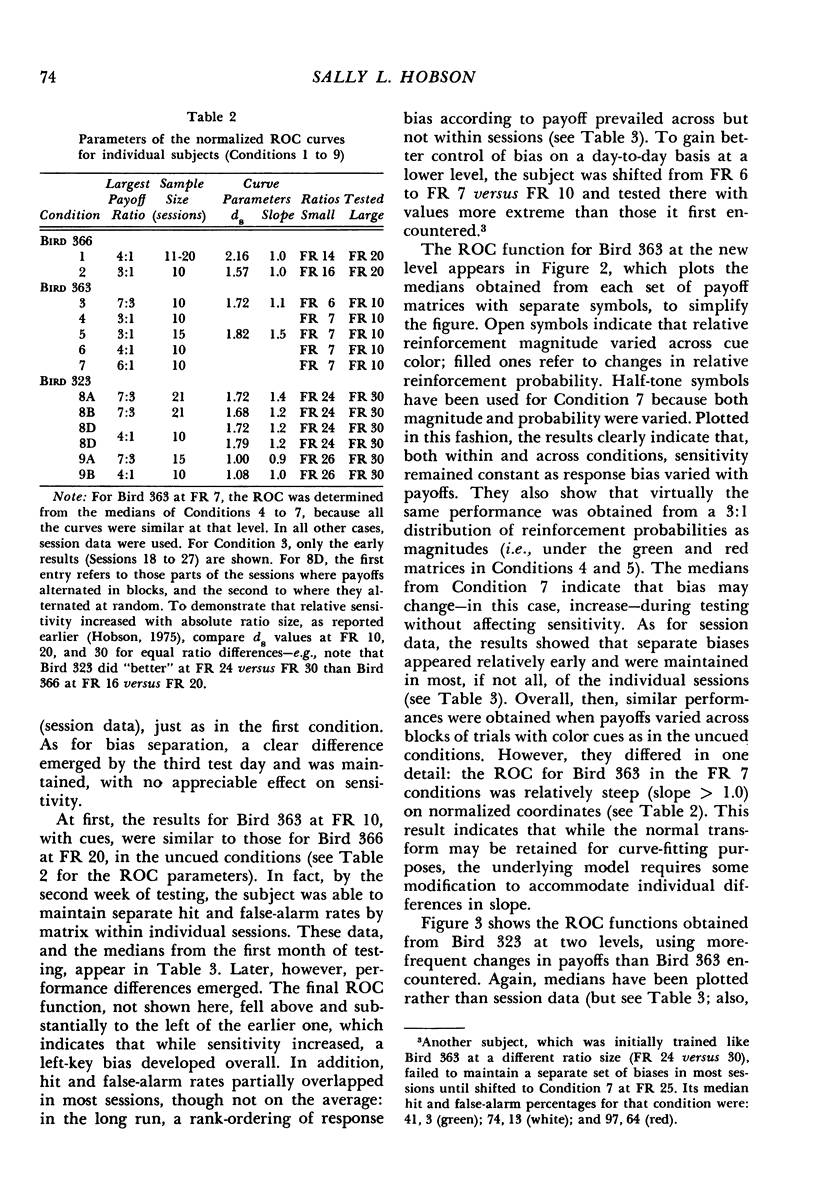
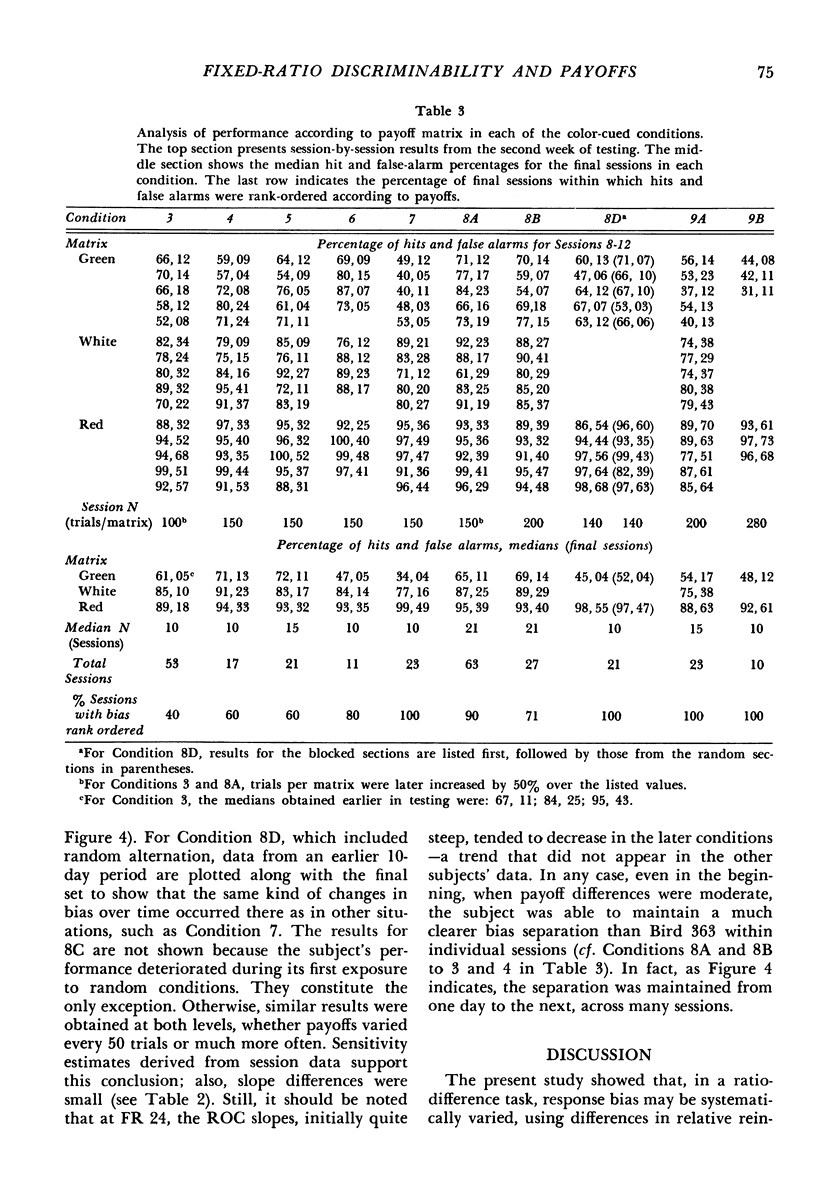
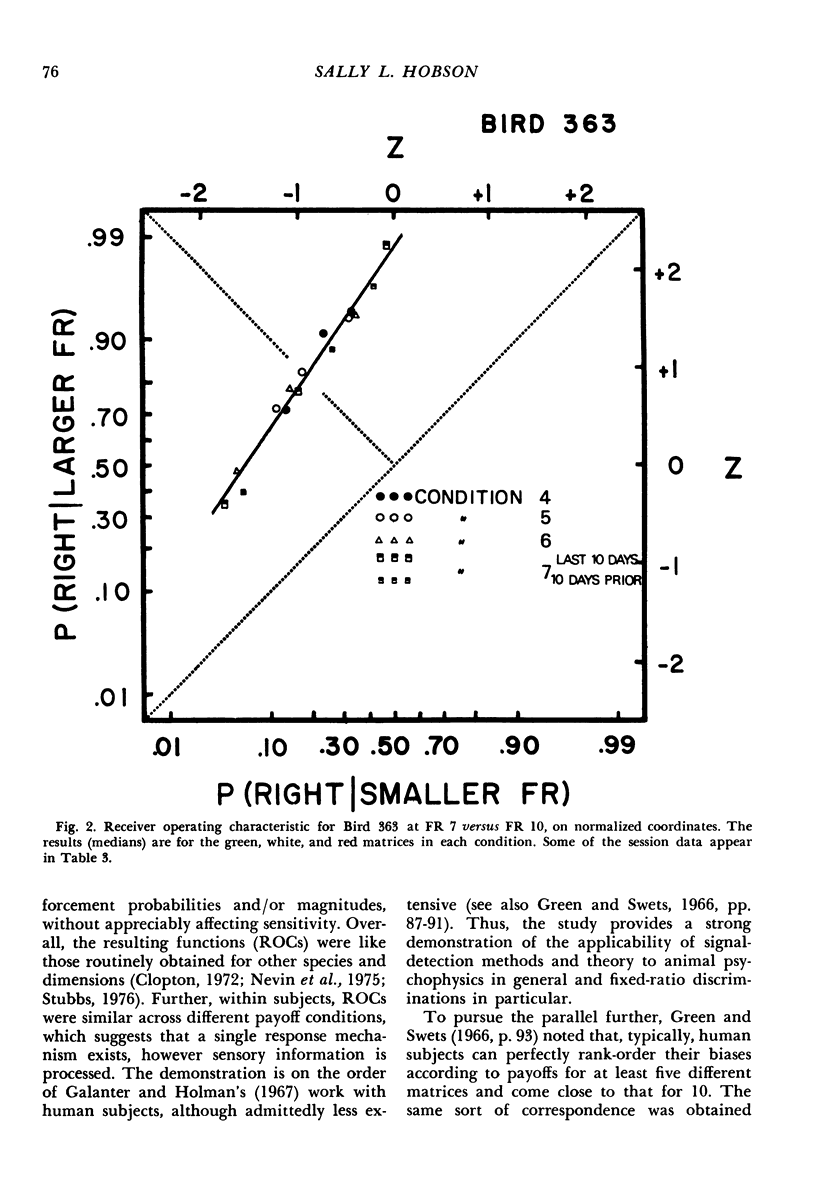
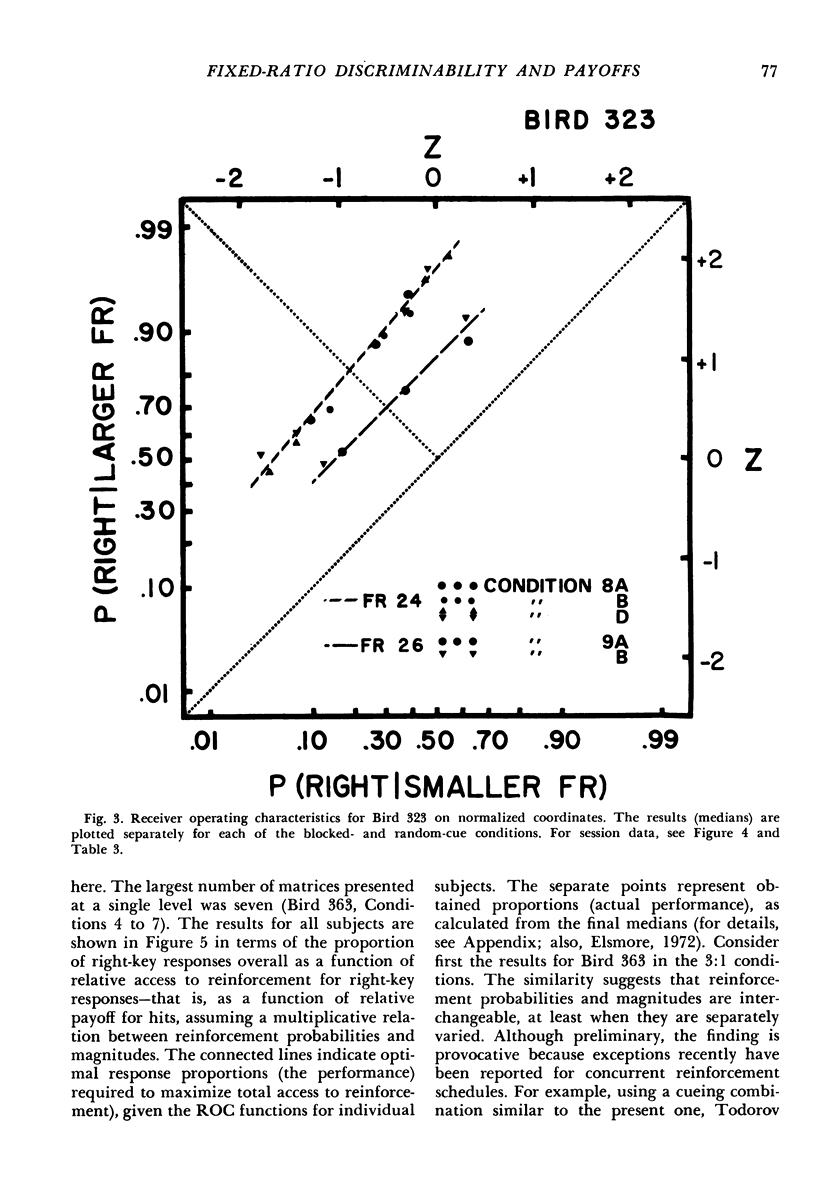
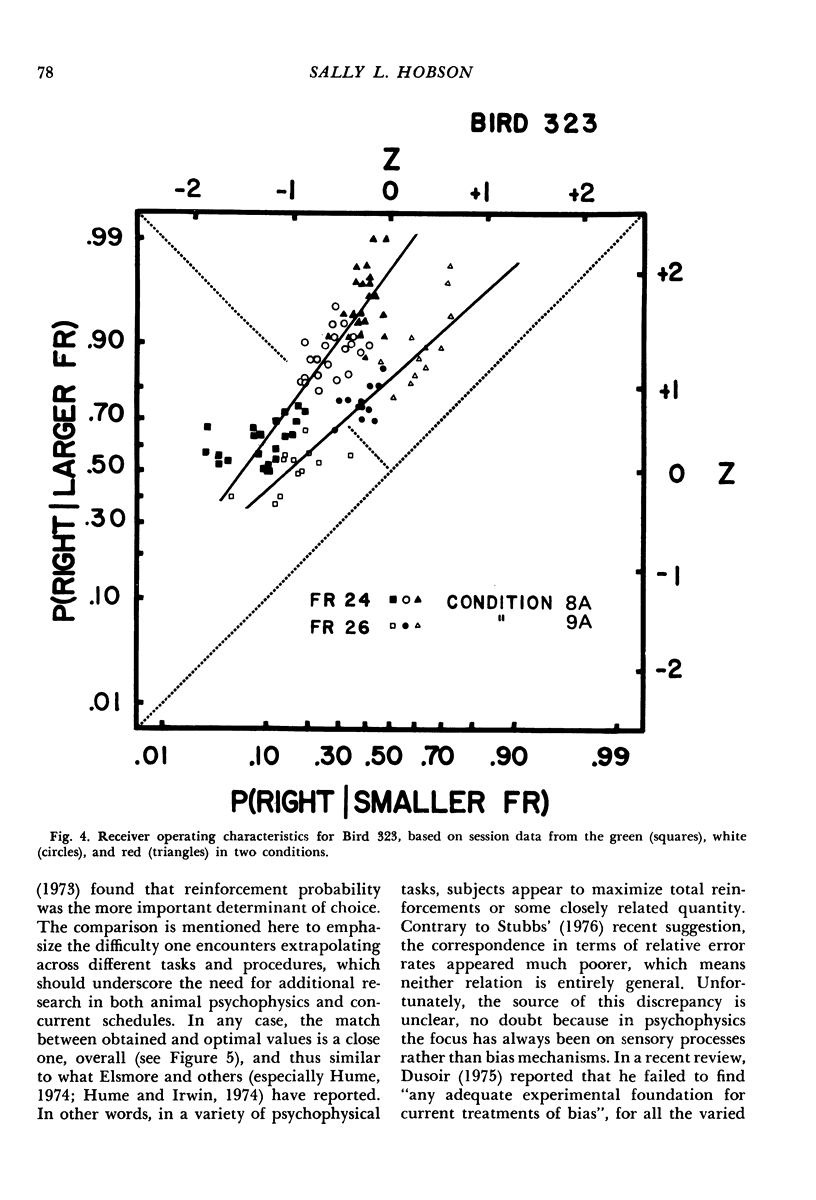
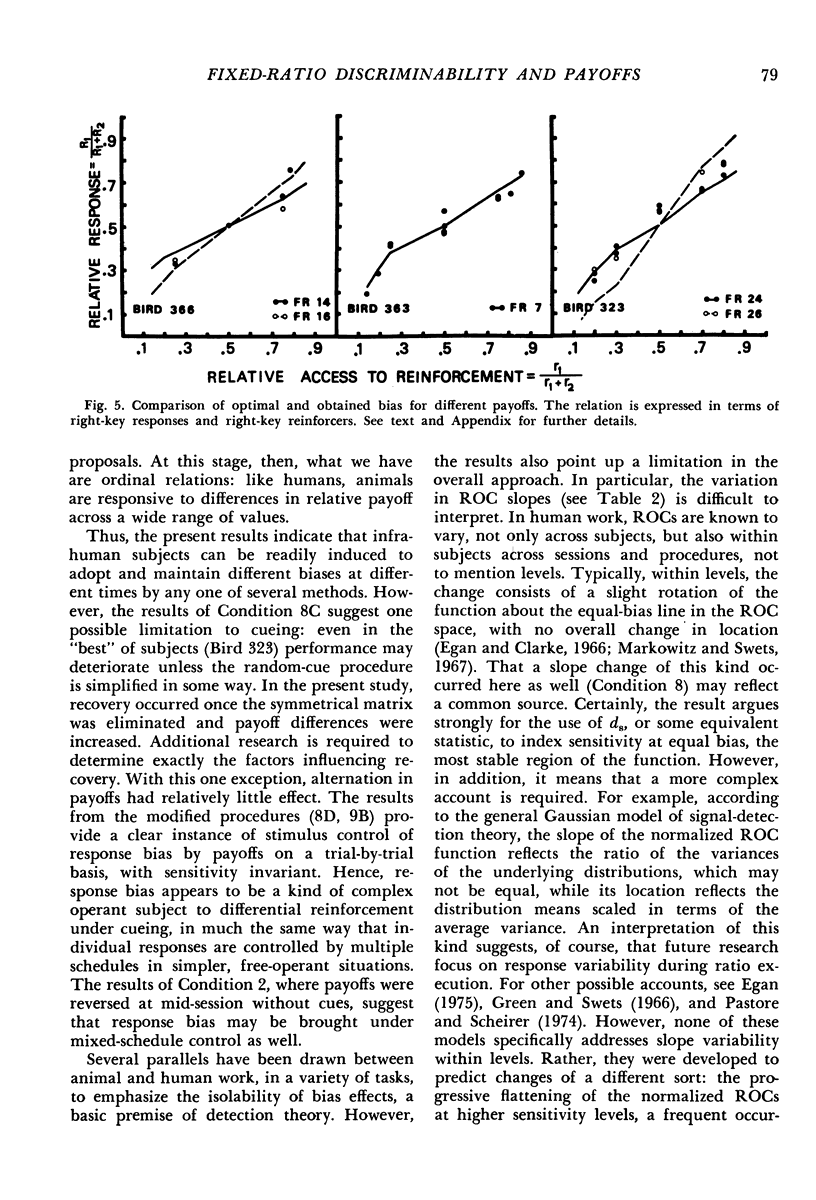
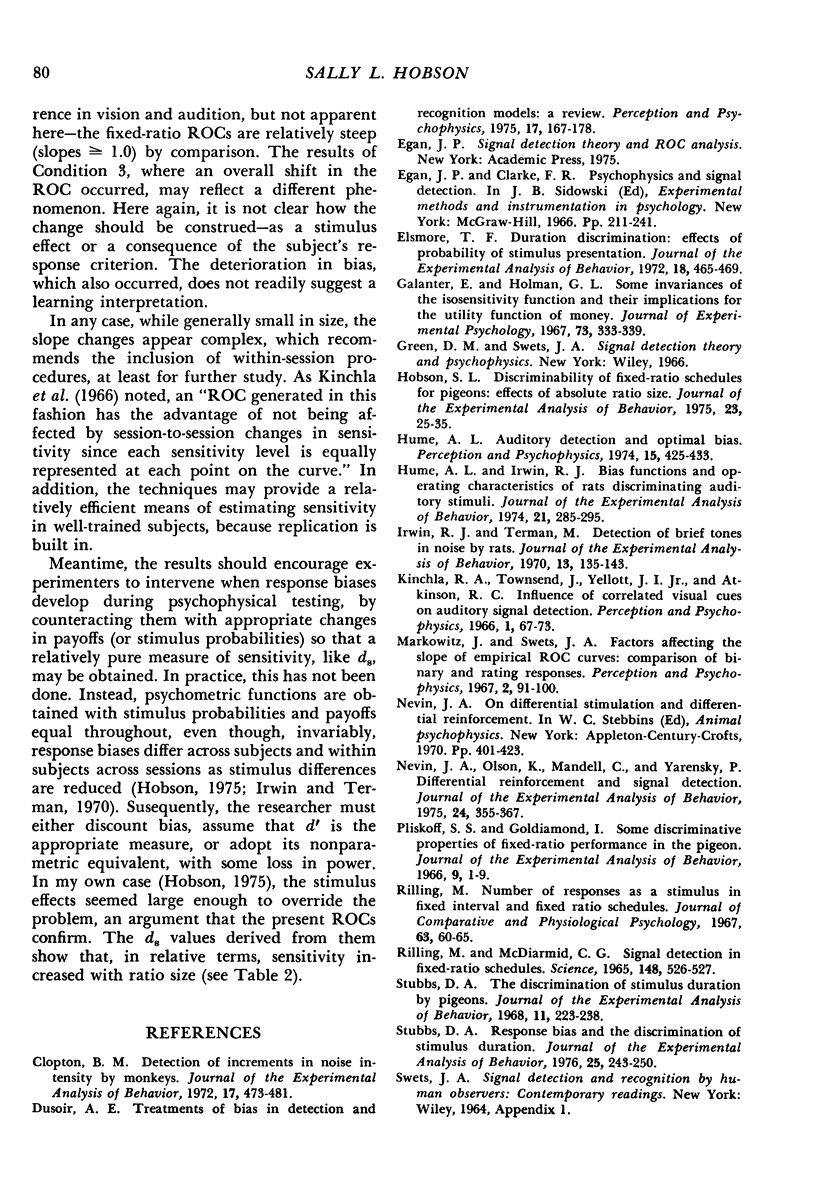
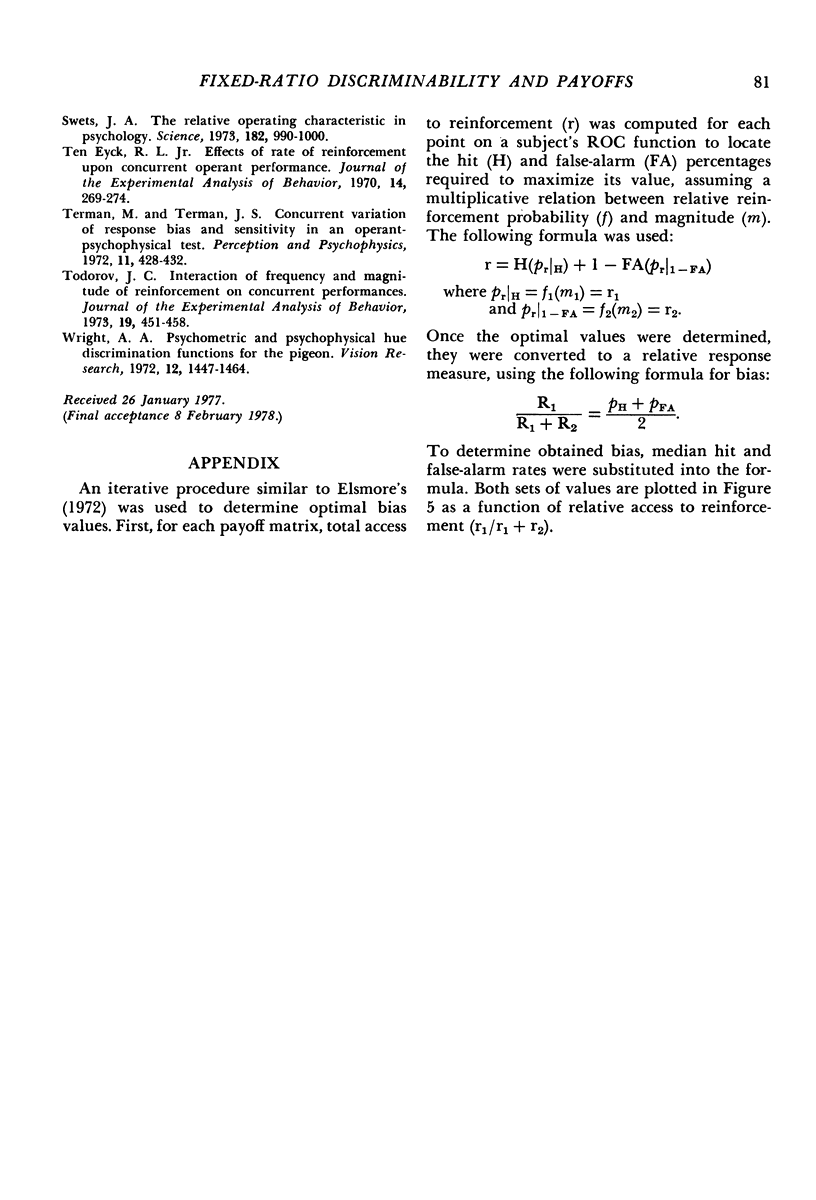
Selected References
These references are in PubMed. This may not be the complete list of references from this article.
- Clopton B. M. Detection of increments in noise intensity by monkeys. J Exp Anal Behav. 1972 May;17(3):473–481. doi: 10.1901/jeab.1972.17-473. [DOI] [PMC free article] [PubMed] [Google Scholar]
- Elsmore T. F. Duration discrimination: effects of probability of stimulus presentation. J Exp Anal Behav. 1972 Nov;18(3):465–469. doi: 10.1901/jeab.1972.18-465. [DOI] [PMC free article] [PubMed] [Google Scholar]
- Galanter E., Holman G. L. Some invariances of the isosensitivity function and their implications for the utility function of money. J Exp Psychol. 1967 Mar;73(3):333–339. doi: 10.1037/h0024275. [DOI] [PubMed] [Google Scholar]
- Hobson S. L. Discriminability of fixed-ratio schedules for pigeons: effects of absolute ratio size. J Exp Anal Behav. 1975 Jan;23(1):25–35. doi: 10.1901/jeab.1975.23-25. [DOI] [PMC free article] [PubMed] [Google Scholar]
- Hume A. L., Irwin R. J. Bias functions and operating characteristics of rats discriminating auditory stimuli. J Exp Anal Behav. 1974 Mar;21(2):285–295. doi: 10.1901/jeab.1974.21-285. [DOI] [PMC free article] [PubMed] [Google Scholar]
- Irwin R. J., Terman M. Detection of brief tones in noise by rats. J Exp Anal Behav. 1970 Mar;13(2):135–143. doi: 10.1901/jeab.1970.13-135. [DOI] [PMC free article] [PubMed] [Google Scholar]
- Nevin J. A., Olson K., Mandell C., Yarensky P. Differential reinforcement and signal detection. J Exp Anal Behav. 1975 Nov;24(3):355–367. doi: 10.1901/jeab.1975.24-355. [DOI] [PMC free article] [PubMed] [Google Scholar]
- Pliskoff S. S., Goldiamond I. Some discriminative properties of fixed ratio performance in the pigeon. J Exp Anal Behav. 1966 Jan;9(1):1–9. doi: 10.1901/jeab.1966.9-1. [DOI] [PMC free article] [PubMed] [Google Scholar]
- RILLING M., MCDIARMID C. SIGNAL DETECTION IN FIXED-RATIO SCHEDULES. Science. 1965 Apr 23;148(3669):526–527. doi: 10.1126/science.148.3669.526. [DOI] [PubMed] [Google Scholar]
- Rilling M. Number of responses as a stimulus in fixed interval and fixed ratio schedules. J Comp Physiol Psychol. 1967 Feb;63(1):60–65. doi: 10.1037/h0024164. [DOI] [PubMed] [Google Scholar]
- Stubbs A. The discrimination of stimulus duration by pigeons. J Exp Anal Behav. 1968 May;11(3):223–238. doi: 10.1901/jeab.1968.11-223. [DOI] [PMC free article] [PubMed] [Google Scholar]
- Stubbs D. A. Response bias and the discrimination of stimulus duration. J Exp Anal Behav. 1976 Mar;25(2):243–250. doi: 10.1901/jeab.1976.25-243. [DOI] [PMC free article] [PubMed] [Google Scholar]
- Swets J. A. The Relative Operating Characteristic in Psychology: A technique for isolating effects of response bias finds wide use in the study of perception and cognition. Science. 1973 Dec 7;182(4116):990–1000. doi: 10.1126/science.182.4116.990. [DOI] [PubMed] [Google Scholar]
- Ten Eyck R. L. Effects of rate of reinforcement-time upon concurrent operant performance. J Exp Anal Behav. 1970 Nov;14(3):269–274. doi: 10.1901/jeab.1970.14-269. [DOI] [PMC free article] [PubMed] [Google Scholar]
- Todorov J. C. Interaction of frequency and magnitude of reinforcement on concurrent performances. J Exp Anal Behav. 1973 May;19(3):451–458. doi: 10.1901/jeab.1973.19-451. [DOI] [PMC free article] [PubMed] [Google Scholar]
- Wright A. A. Psychometric and psychophysical hue discrimination functions for the pigeon. Vision Res. 1972 Sep;12(9):1447–1464. doi: 10.1016/0042-6989(72)90171-x. [DOI] [PubMed] [Google Scholar]


